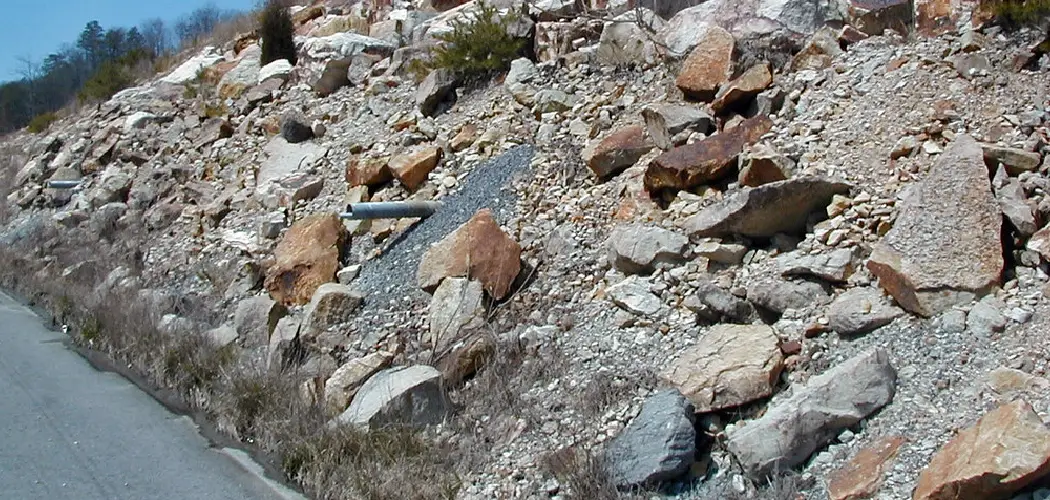Stabilizing a slope with gravel is an effective way to protect and beautify your landscape. Whether you want to create a pathway, fill in steep terrain or keep soil from eroding, adding gravel can provide the solution you need – but only if it stays put! Gravel provides traction on slopes to prevent slips and slides, reduces runoff for better erosion control, and adds visual appeal all at once. But how do you make sure that the material will stay in place? This blog post will explain how to retain gravel on a slope so that it remains both attractive and functional. With some basic preparation and maintenance tips, your project will be able to stand up against even the muddiest conditions!
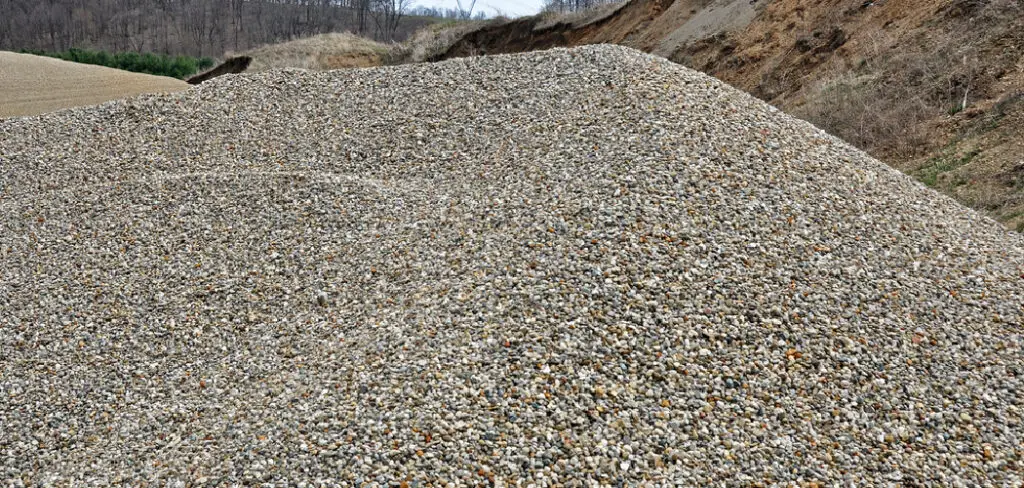
Can You Lay Gravel Grids on a Slope?
Yes, you can lay gravel grids on a slope. Gravel grids are large plastic panels that interlock to form a more stable base for gravel. The grids hold the gravel in place on steep slopes, and they offer superior drainage compared to traditional methods of retaining gravel. For best results, you must use the right type of grid for your slope and install the grids properly.
When selecting a grid for your project, you must choose one that is designed to work with gravel on slopes. This type of grid has specially designed edges that work together to create a stair-step effect and prevent soil erosion. Make sure you place the grid parallel to the steepest slope line so that it can provide maximum effectiveness.
To install gravel grids on a slope, you must dig into the earth and lay down a layer of crushed stone or other base material. This will provide an even surface to work with and help prevent cracking or damage to the grid while it is in place. Place the panels closely together according to manufacturer instructions and fill in the gaps with gravel.
Once your grid is in place, you can secure it further by adding a layer of geo-textile fabric over the top to ensure that the gravel won’t shift. When everything is secure, add a final layer of gravel to complete the project and prevent water from pooling or running down the slope. With proper installation, gravel grids can be an effective solution for retaining gravel on a slope.
Just remember to always follow manufacturer instructions when installing your grid and use the right materials for the best results. If you take the time to do it correctly, you’ll have a lasting result that will keep your gravel in place.
8 Methods How to Retain Gravel on a Slope
1. Use a Retaining Wall.
One of the most common methods for retaining gravel on a slope is to build a retaining wall. Retaining walls are structures that are built to hold back soil or other materials. They are typically made of concrete, stone, or wood.
When built correctly, they are very effective at retaining gravel on a slope. If your gravel is on a steep slope, it is important to build the wall tall enough to provide adequate support. Be sure to use quality materials when constructing the wall.
2. Use Geotextile Fabric.
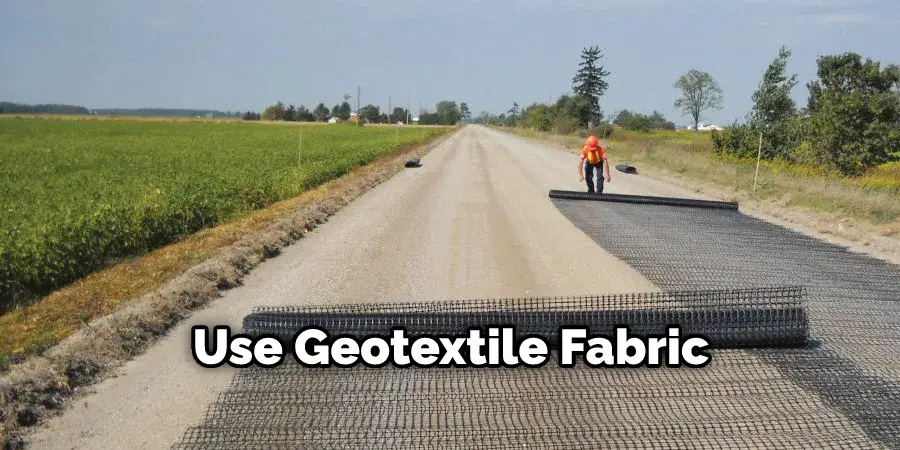
Geotextile fabric is a type of fabric that is often used in construction projects. It is made of synthetic fibers that are woven together to create a strong, durable material. Geotextile fabric can be used to reinforce soil and prevent erosion. It can also help to retain gravel on a slope. To use geotextile fabric, lay it down over the area where you want to install the gravel.
Hold the fabric in place with stakes or pins, and then spread the gravel over it. The geotextile fabric will hold the gravel in place and prevent it from washing away. You can also use geotextile fabric to hold larger rocks or boulders in place on a slope. This is an effective way to create a stable landscape and prevent erosion.
3. Use Landscaping Timbers.
Landscaping timbers are large pieces of wood that are often used in landscaping projects. They can be used to build retaining walls, borders, and other structures. Landscaping timbers can also be used to hold back gravel on a slope.
To create a sturdy retaining wall with timbers, you will need to secure them into the soil. You can use stakes or screws to do this. Make sure to secure the timbers firmly in place. Once they are secured, you can fill the area behind them with gravel. This will help keep the gravel in place and prevent it from slipping down the slope.
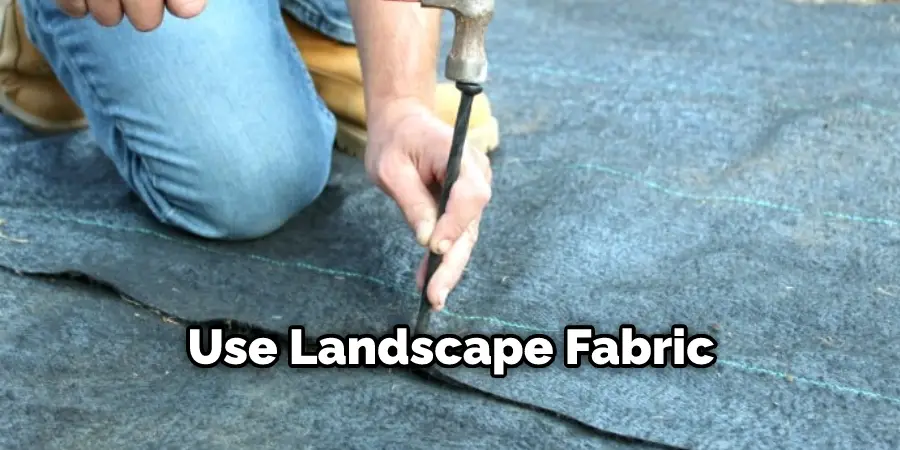
Be sure to use landscape fabric between the timbers and the soil to help keep the wall in place. You may also want to secure the fabric with stakes or screws as well.
4. Use Interlocking Blocks.
Interlocking blocks are blocks that fit together like puzzle pieces. They can be made of concrete, stone, or other materials. Interlocking blocks can be used to build retaining walls and other structures. These structures can help hold gravel in place and keep it from washing away. Interlocking blocks also create a more attractive look than just rocks alone.
Be sure to use the right type of mortar or grout when installing interlocking blocks, as this will help to ensure that the blocks stay in place and don’t move. In some cases, geotextiles or erosion control blankets can be used along with the interlocking blocks to provide an extra layer of stability and protection.
5. Use Rock Anchors.
Rock anchors are devices that are used to secure rocks or other materials in place. They are typically made of metal and consist of a rod that is driven into the ground and a plate that is attached to the rock or other material. Rock anchors can be used to secure rocks or gravel on a slope.
They will keep the gravel in place and prevent it from slipping or moving down the slope. The anchors should be distributed evenly around the area where the gravel is located to ensure maximum stability. Rock anchors should be placed at least 6 inches apart, and the rod should be driven into the ground at least 18 inches deep. This will ensure that the anchor is deep enough to provide stability but not so deep that it damages the surrounding area.
When using rock anchors, it is important to use the correct size anchor for the size of rock or gravel that you are using. This will ensure that your anchors are secure and will not fail over time. Proper installation is also important, so it may be necessary to consult with a professional installer before proceeding.
6. Use Cable Nets.
Cable nets are nets that are made of cables and wire mesh. They can be used to support slopes or retaining walls. Cable nets can also be used to hold back gravel on a slope. To install them, first, you will need to drive posts into the ground to secure the net. After that, you can attach the net to the posts.

This is a great way to keep gravel in place on a slope, as the cable nets will provide added strength and stability. You can also add rocks or other materials to help hold the net in place against soil erosion. This method of retaining gravel may be more expensive than other options, but it does offer maximum protection and durability for slopes with high levels of erosion or instability.
7. Use Gabion Baskets.
Gabion baskets are wire mesh cages that can be filled with rocks or other materials. They are often used for erosion control and soil stabilization due to their strength and durability. To use them, place the baskets on the slope and then fill them with large stones or rocks. The weight of these materials will help keep it in place and provide stability for your slope.
In addition, gabion baskets can be used creatively to add beauty to your landscape design by using smaller decorative stones inside the cage. Gabion baskets are an easy and cost-effective way to keep gravel in place on a slope. Although installation can be time-consuming, the baskets are an effective way to prevent soil erosion and retain gravel on a slope.
8. Use Vegetation.
Another way to keep gravel from eroding off a slope is by using vegetation. Planting shrubs, grasses, or other plants along the slope will help hold the gravel in place. The roots of the vegetation can create an anchor, which helps keep the soil and gravel together on a hillside.
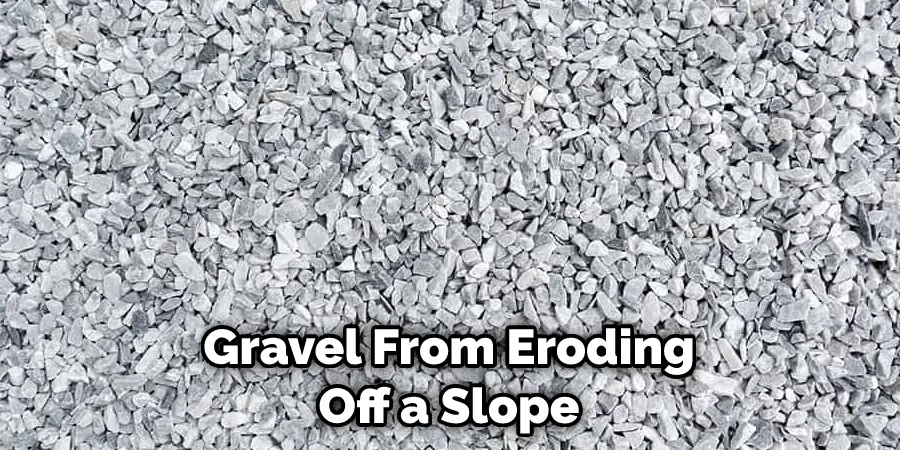
Additionally, vegetation absorbs rainwater, helping to prevent erosion. Planting flowers, shrubs, and trees can also give your property aesthetic appeal as well as provide protection from erosion. Before planting vegetation, it is important to make sure that the soil is suitable for whatever kind of plants are being chosen. Poorly draining soils can lead to root rot and other problems that could actually make the problem worse.
By using the right combination of these methods, you can effectively retain gravel on a slope and maintain the stability of your landscape. Just remember to always follow manufacturer instructions when installing any type of retaining device and use the right materials for the best results. With proper installation, you’ll have a lasting result that will keep your gravel in place.
Things to Consider When Retaining Gravel on a Slope
1. Slope Gradient:
The steeper the slope, the more difficult it is to retain gravel. It is important to take into account the slope of the area when determining how best to retain gravel. If the slope is too steep, additional measures need to be taken in order to effectively hold the gravel in place.
2. Erosion Control:

Erosion can easily wash away any loose gravel on a slope. In order to prevent this from happening, it is important to take measures such as using groundcovers, grasses, or vegetation that will help control erosion and keep the gravel in place. Additionally, terracing may also be used to reduce erosion and create level areas where rock or other materials can be placed for extra reinforcement.
3. Construction Materials:
The type of construction materials used for retaining walls should also be taken into consideration when retaining gravel on a slope. Brick, block, or concrete are all good materials to use as they are strong and can easily support the weight of the gravel. Additionally, it is important to consider drainage around the walls because if there is no adequate drainage, then water can accumulate, which can cause the wall to collapse over time.
4. Retaining Wall Design:
The design of any retaining wall used should also be taken into account when trying to retain gravel on a slope. The design should ensure that the wall is able to withstand both gravitational and lateral forces in order to prevent failure due to external pressures such as flooding or water runoff from rainstorms. Additionally, using geosynthetics such as geocell or geometry can help to add extra support and stability to the wall.
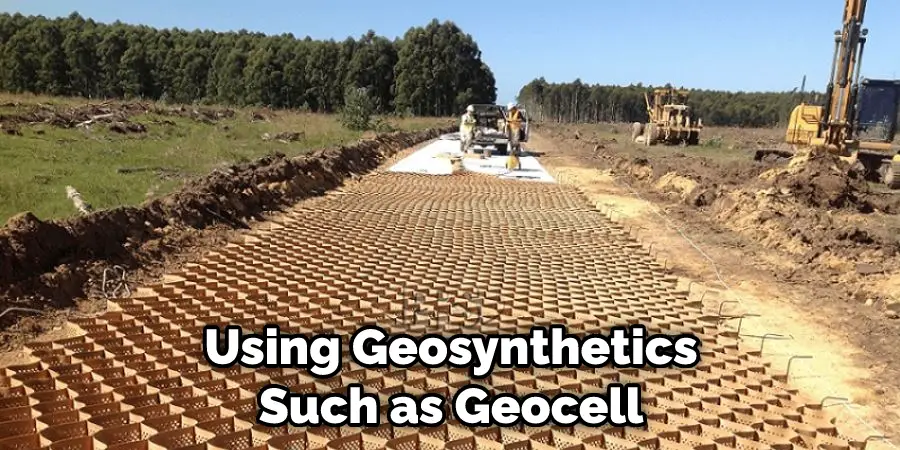
With these factors in mind, it is possible to effectively retain gravel on a slope and keep it in place for years to come. By ensuring the slope gradient is appropriate, taking measures to control erosion, selecting suitable construction materials, and designing a wall that can withstand external pressures, retaining gravel on a slope becomes much easier.
Conclusion
By following the steps we outlined above, you can create a system that will allow rainwater to roll off of your slope instead of pooling and eroding the gravel. This will help keep your yard looking great while also protecting your home from possible damage. We hope this guide on how to retain gravel on a slopewas helpful. Please share it with your friends on social media if you find it useful. And be sure to check back here soon for more informative guides like this one.
You can check it out to Keep Patio Pavers from Moving

